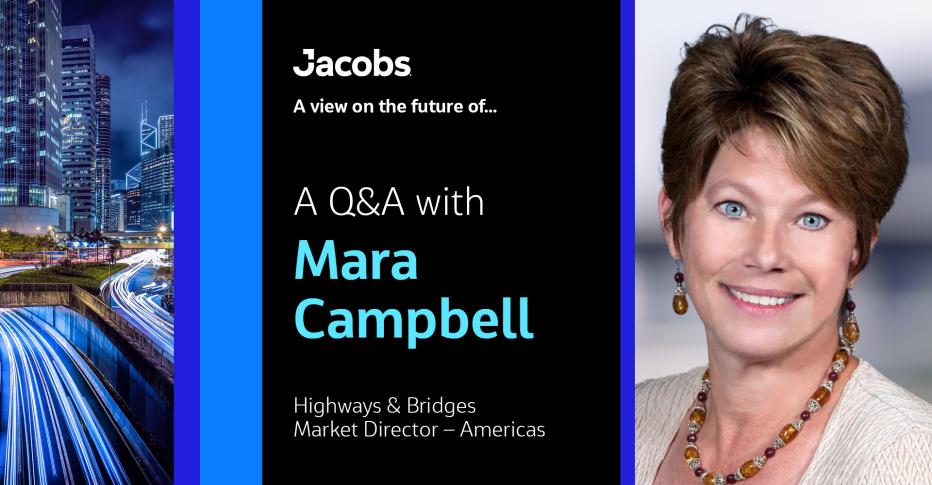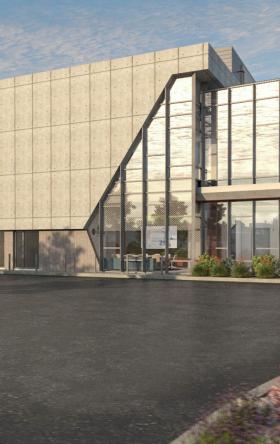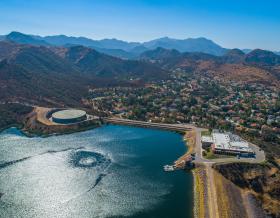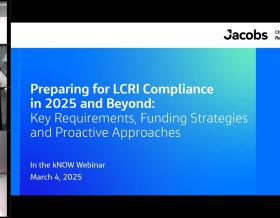
Transportation infrastructure is the backbone of society, enabling efficient movement of people and goods, fostering economic growth, and enhancing quality of life by connecting communities and supporting sustainable development.
Jacobs provides unmatched expertise in highway and bridge engineering and design, environmental documentation, program and construction management and highway safety – and we’re your neighbors, people who understand your stakeholder requirements and local challenges. That’s how we combine the right technical design, environmental, traffic, and safety expertise to offer the right solution that fits your needs.
In this Q&A, we connect with Mara Campbell, our new director of highways and bridges for the Americas, to talk about the trends, technologies and solutions driving a more connected, sustainable transportation future.
Tell us a bit about what a day in the life is like as the Americas Market Director for Highways and Bridges, and what we offer to our clients in this area.
My new role is focused on helping our team win major pursuits and then guiding our operations teammates to deliver these critical infrastructure upgrades.
As our infrastructure ages and population increases, we use new technology and expertise to develop innovative solutions to address future transportation demand. Ultimately, our team partners with the transportation industry to improve the movement of goods, services, and people by providing connectivity, accessibility, equity and resiliency within our transportation system.
What are the biggest challenges in highways and bridges today?
We’re amid the most significant changes in transportation since President Eisenhower’s highway expansion program in 1956, which expanded the system from 1,000 to 41,000 miles in just over 12 years.
The advancements in technology, the lack of investment for roads and bridges, serious injuries and deaths on roadways, and mitigating and responding to climate change are just a few challenges facing the transportation industry.
- Advances in technology are disrupting transportation systems as autonomous vehicle technologies mature and micromobility trends are refined, becoming a part of our transportation system. The need for roads and bridges will remain, but with autonomous vehicles, striping and planning for infrastructure will need to be different. Other technologies such as BIM (building information modeling) and digital twins are impacting the way we work, adding efficiencies that didn’t exist before, while changing how we do business.
- Lack of investment in highways and bridges is holding back major progress in U.S. transportation infrastructure. Two well-documented facts characterize infrastructure investment in the U.S.: there’s been less investment in recent decades and reversing that decline would deliver meaningful economic benefits. Investing in our infrastructure can strengthen our long-term capacity while creating opportunity for Americans in disadvantaged communities. The challenge is a big one, as the U.S. currently ranks 13th in the amount of infrastructure investment being made globally, but that just creates an even greater opportunity to capitalize on.
- Serious injuries and deaths on our roadways are unacceptable and have only risen over the last five years. Almost 95% of people who die using our nation’s transportation networks are killed on our streets, roads, and highways, and this threat to our safety is getting worse. These incidents are avoidable and it will take creative, forward-thinking design and plans to make safety a priority again.
- Climate change forces us to think about transportation sustainability and infrastructure resiliency. This is a huge challenge as hurricanes and other related threats are significantly damaging roads and bridges across the Americas. Preparing for and recovering from a varying climate will continue to be a top focus for our clients across the Americas.
How do we help clients think differently to respond to these challenges and those of the future?
Our experience in highway and bridge engineering and design is unmatched. We bring a broad perspective to each of our projects, offering innovation and different ways of thinking to keep people safe and move goods and people efficiently. Our team is always exploring ways to improve the journey, helping our clients see things differently. Additionally, our team is building new tools to analyze, optimize and better design roadways and bridges for an enhanced and safer experience.
A great example is our acquisition of StreetLight Data. Before StreetLight, it took manual counts, roadside surveys, and months of data collection to understand traffic flow. With StreetLight, we can now combine machine learning with deep transportation knowledge to shed light on how people, goods, and services move — and makes modern analytics available on-demand to professionals shaping today’s transportation. We also use StreetLight solutions to pinpoint and mitigate traffic disruptions during project construction. For example, its construction solutions allow us to view traffic patterns to optimize closure allowances and create data-driven detour plans before the build. Then during construction, StreetLight software allows us to observe traffic flows to dynamically adjust plans and build targeted public messaging about disruptions. Post-project, it allows us to analyze travel patterns and generate reports to illustrate the improvements. Together, these solutions are changing how we design, build and operate infrastructure into the future.
As the market will surely continue to shift, what are some of the biggest opportunities ahead?
The vast network of highways and bridges in the Americas connects communities and supports the economy.
Running from coast to coast through beautiful rural landscapes and great cities, the U.S. National Highway System, with over 160,000 miles of road, represents just five percent of the total mileage but accounts for 55 percent of vehicle miles traveled and over 83 percent of truck miles. With more than 620,000 bridges, including major river crossings, these infrastructures face critical demands both today and into the future in the U.S. In Canada, there are more than 620,000 miles (over a million kilometers) of roads, and similar needs on bridge and connection points.
Our clients value our innovative designs, fresh thinking, digitization, and attention to infrastructure challenges, giving us a major role in shaping the future of the nation’s highway and bridge infrastructure.
Is there a project you’re particularly proud of?
When I was at Missouri Department of Transportation (MoDOT), we implemented the Safe & Sound Bridge Improvement Program, which was expected to take more than five years, in just over three and a half years. Now, Missourians in every county of the state are using new and improved bridges that will serve their needs for many decades to come and MoDOT reversed a growing trend of deficient bridges.
While at Jacobs, I helped secure a General Engineering Consultant (GEC) Maintenance program with the Florida Turnpike Enterprise. I’m now serving as the Program Director on the program, which is focused on keeping the turnpike in in excellent condition, and maintaining and expanding the system – that currently serves more than 3,000,000 travelers daily – so it’s able to support increased usage into the future.
It’s easy to be proud of the work we do every day. Roads and bridges are the lifelines of our communities – connecting people, fostering economic growth, and ensuring safe and efficient travel for all.
About the interviewee

Mara Campbell was recently named Jacobs’ Highways and Bridges Market Director in the Americas.
After retiring from the Missouri Department of Transportation with over 25 years of hands-on Department of Transportation (DOT) experience, Mara joined Jacobs in 2015 to lead and deliver transportation system management frameworks for key clients.
As a leader in transportation performance and policy with expertise in implementing innovations, she brings nearly three decades of experience as a change agent in helping state DOTs develop, integrate, document and implement complex transportation management systems to help agencies run more efficiently. Mara represented the U.S. on the World Road Association (also known as PIARC) Technical Committee on Performance Management where she has presented on performance and risk management with transportation agencies in over 25 countries. Currently, Mara serves as the Chair for the Transportation Research Board (TRB)’s Section – Executive Management Issues, after serving for eight years as the Chair of the TRB Performance Management Committee and six years as the Chair of the TRB Strategic Management Committee. She is also active in WTS – as she is passionate about advancing women in transportation.
Mara is married to her soul-mate Carter, and they have four grown children and four grandchildren, ages 10, 7, 4 and 2. Mara loves to spend time with her grandchildren, but also enjoys playing the piano and baking cakes!
You might be interested in...
-

One of Mara's cake creations... do you recognize the character?
-

Mara and her family












































